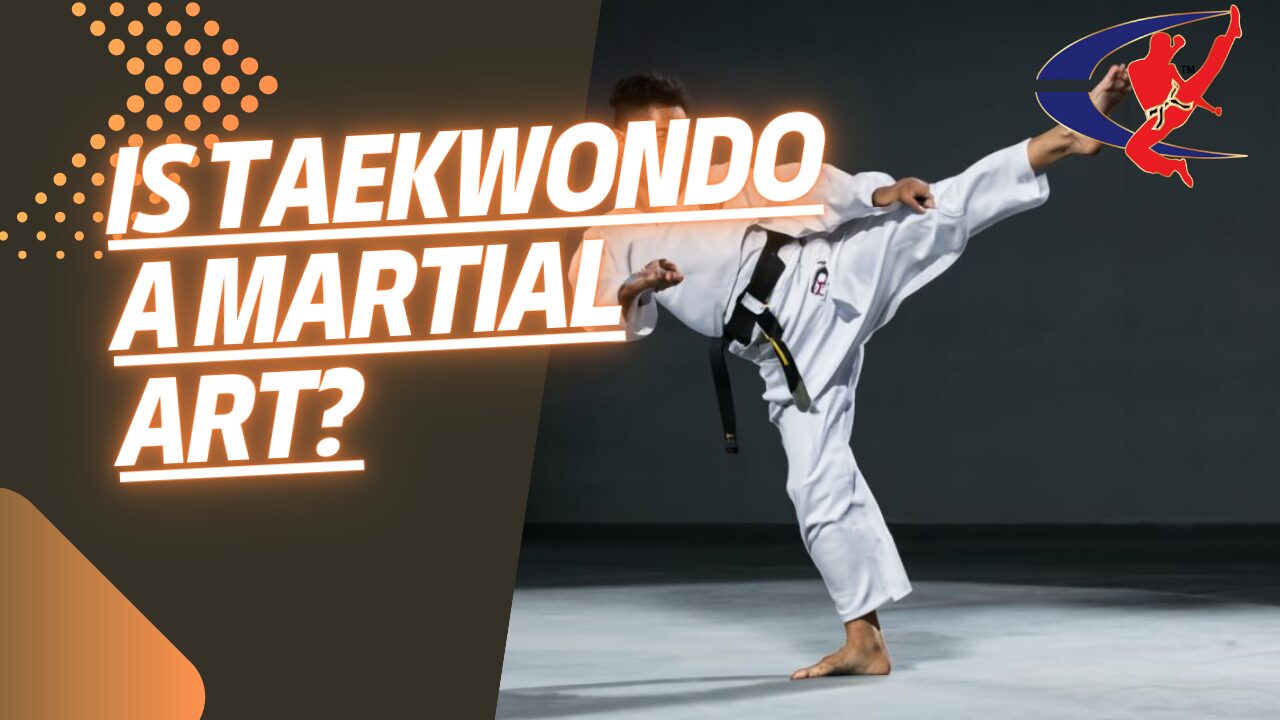Taekwondo is a traditional martial art rooted in Korean heritage. It focuses on combat techniques, inner discipline, and cultural values. Developed from ancient practices and shaped in the mid-20th century, it emphasizes dynamic kicking techniques. Taekwondo’s belt ranking system symbolizes progress, with the black belt indicating expertise and dedication. This holistic discipline blends physical prowess with mental fortitude.
Key Takeaways
- Taekwondo is a traditional martial art rooted in Korean combat practices.
- It emphasizes self-defense techniques, discipline, and respect.
- Taekwondo promotes mental well-being, physical fitness, and personal growth.
- The art focuses on developing muscle memory, confidence, and empowerment.
- Its training instills values of humility, integrity, and a healthy lifestyle.
Origins of Taekwondo
Taekwondo traces its origins back to ancient Korean martial arts practices that date back centuries. Influenced by various Korean martial arts styles, such as Taekkyeon and Subak, Taekwondo began to take shape in the mid-20th century. The Korean influences in Taekwondo are deeply rooted in the nation’s history, reflecting its cultural values and traditions.
The modern evolution of Taekwondo can be attributed to the efforts of martial artists like General Choi Hong Hi, who played a significant role in shaping the art into what it is today. With an emphasis on dynamic kicking techniques and a strong focus on self-defense, Taekwondo has evolved into a popular martial art practiced worldwide.
As Taekwondo continues to spread globally, its traditional Korean roots remain a fundamental aspect of its identity. The discipline, techniques, and philosophy of Taekwondo all stem from its rich history and continue to shape its practice in the modern era.
Fundamental Principles of Taekwondo
Rooted in centuries-old Korean martial arts traditions, the fundamental principles of Taekwondo embody discipline, precision, and a technical approach to combat and self-defense. Kicking techniques are a cornerstone of Taekwondo, with practitioners focusing on developing powerful and accurate strikes using their legs and feet. These kicks are executed with speed and precision, emphasizing both offensive and defensive strategies in combat situations.
Another key aspect of Taekwondo is its belt ranking system, which symbolizes the progress and skill level of practitioners. Starting from the beginner levels with white belts, students work their way up through different colored belts, each representing a deeper understanding and mastery of the art. The ultimate goal is to achieve the coveted black belt, a symbol of expertise and dedication to the practice of Taekwondo.
Belt promotions are not given lightly and require demonstrated proficiency in various techniques and forms, encouraging students to set goals, work diligently, and strive for continual improvement in their martial arts journey.
Taekwondo as a Traditional Martial Art
Embodying centuries-old Korean martial arts traditions, Taekwondo stands as a disciplined and technical embodiment of combat and self-defense principles. Rooted in the rich cultural heritage of Korea, Taekwondo emphasizes traditional techniques that have been passed down through generations. These techniques focus on striking with the hands and feet, blocking, and sparring, all of which are executed with precision and control.
The cultural significance of Taekwondo lies in its promotion of values such as respect, integrity, and perseverance. Practitioners are not only taught the physical aspects of the martial art but also the importance of mental discipline and humility. Through rigorous training and adherence to strict protocols, students of Taekwondo learn to embody the principles of martial arts both inside and outside the training hall.
Taekwondo as a Combat Sport
Drawing on its foundational principles of precision and control, Taekwondo has evolved into a competitive arena known for its strategic combat sport approach. Taekwondo as a combat sport emphasizes the application of various combat techniques in controlled sparring matches. Participants engage in bouts where they showcase their skills in kicking, punching, and blocking while adhering to specific sparring rules.
In Taekwondo competitions, athletes demonstrate mastery of a wide array of combat techniques, including dynamic kicks such as the roundhouse kick, sidekick, and spinning hook kick. These techniques require not only strength and agility but also precision and timing to effectively score points against opponents. Sparring rules in Taekwondo competitions aim to ensure the safety of the athletes while allowing for dynamic and engaging exchanges. Regulations governing permissible targets, scoring criteria, and match duration contribute to the strategic nature of Taekwondo as a combat sport.
Arguments for Taekwondo as a Martial Art
Taekwondo, as a traditional martial discipline, embodies a rich history of combat techniques and philosophical principles. Advocates of Taekwondo as a martial art often highlight its emphasis on self-defense techniques and physical discipline. The practice of Taekwondo involves learning how to defend oneself in various situations through a combination of strikes, blocks, and evasion maneuvers. These self-defense techniques are not only practical but also instill a sense of confidence and empowerment in practitioners.
Furthermore, Taekwondo is characterized by its focus on physical discipline, requiring students to train rigorously to improve their strength, agility, and flexibility. The repetitive practice of forms (patterns of movements) and sparring drills helps develop muscle memory and enhances overall physical fitness. This disciplined approach to training not only improves one’s martial abilities but also promotes a healthy lifestyle and mental well-being.
Arguments Against Taekwondo as a Martial Art
In evaluating Taekwondo’s classification as a martial art, considerations arise regarding its historical evolution and practical application in modern contexts. Critics argue against Taekwondo being labeled as a true martial art due to concerns related to historical accuracy and cultural appropriation.
One of the primary arguments against Taekwondo’s status as a martial art revolves around historical accuracy. Critics claim that Taekwondo, as it is practiced today, has undergone significant modifications over the years, deviating from its original roots. This departure from historical authenticity raises doubts about whether Taekwondo can be considered a genuine martial art or if it has evolved into a more modernized form focused on sport and competition.
Moreover, accusations of cultural appropriation further fuel the debate against Taekwondo being classified as a traditional martial art. Critics argue that the commercialization and globalization of Taekwondo have led to a dilution of its cultural significance, stripping away essential elements that define it as a martial art with deep historical and cultural roots. As such, these arguments challenge the legitimacy of Taekwondo’s status as a martial art in the eyes of its detractors.
Frequently Asked Questions
What Are the Different Belt Colors in Taekwondo and What Do They Signify?
In Taekwondo, practitioners progress through various belt colors, each symbolizing achievement and rank. Belt testing is an integral part of the grading process, where students demonstrate their skills and knowledge to advance to the next level.
How Does Taekwondo Compare to Other Popular Martial Arts Such as Karate or Jiu-Jitsu?
In comparison to other popular martial arts like karate or jiu-jitsu, Taekwondo showcases dynamic kicking techniques and a strong emphasis on speed and agility. Taekwondo vs Krav Maga highlights distinct styles, while Taekwondo in MMA emphasizes its effectiveness in combat sports.
Are There Any Age Restrictions for Practicing Taekwondo?
Age requirements in Taekwondo vary by school but generally start around 4 or 5 years old. There are no strict upper age limits. Different classes cater to various skill levels and physical abilities, offering benefits such as improved fitness and self-discipline.
How Can Someone Find a Reputable Taekwondo School or Instructor?
To find a reputable Taekwondo school or instructor, research online reviews, visit schools to observe classes, inquire about instructor qualifications and teaching styles. Consider affordability and class schedules. Choose a school that aligns with your goals and preferences.
Is There a Difference in Training and Techniques Between Taekwondo Practiced for Self-Defense Versus for Competition?
In Taekwondo, training for self-defense emphasizes practical applications of techniques, including self-defense strategies tailored for real-life situations. Contrastingly, competition-focused training hones sparring techniques and competition tactics, while forms training enhances overall performance and precision in movements.
Conclusion
In conclusion, Taekwondo, with its origins rooted in Korea and its focus on discipline, respect, and self-improvement, can be considered a traditional martial art.
While some may argue that it has evolved into a more modern combat sport, the fundamental principles and techniques of Taekwondo remain deeply rooted in traditional martial arts practices.
Ultimately, the classification of Taekwondo as a martial art is subjective and open to interpretation based on individual perspectives.

